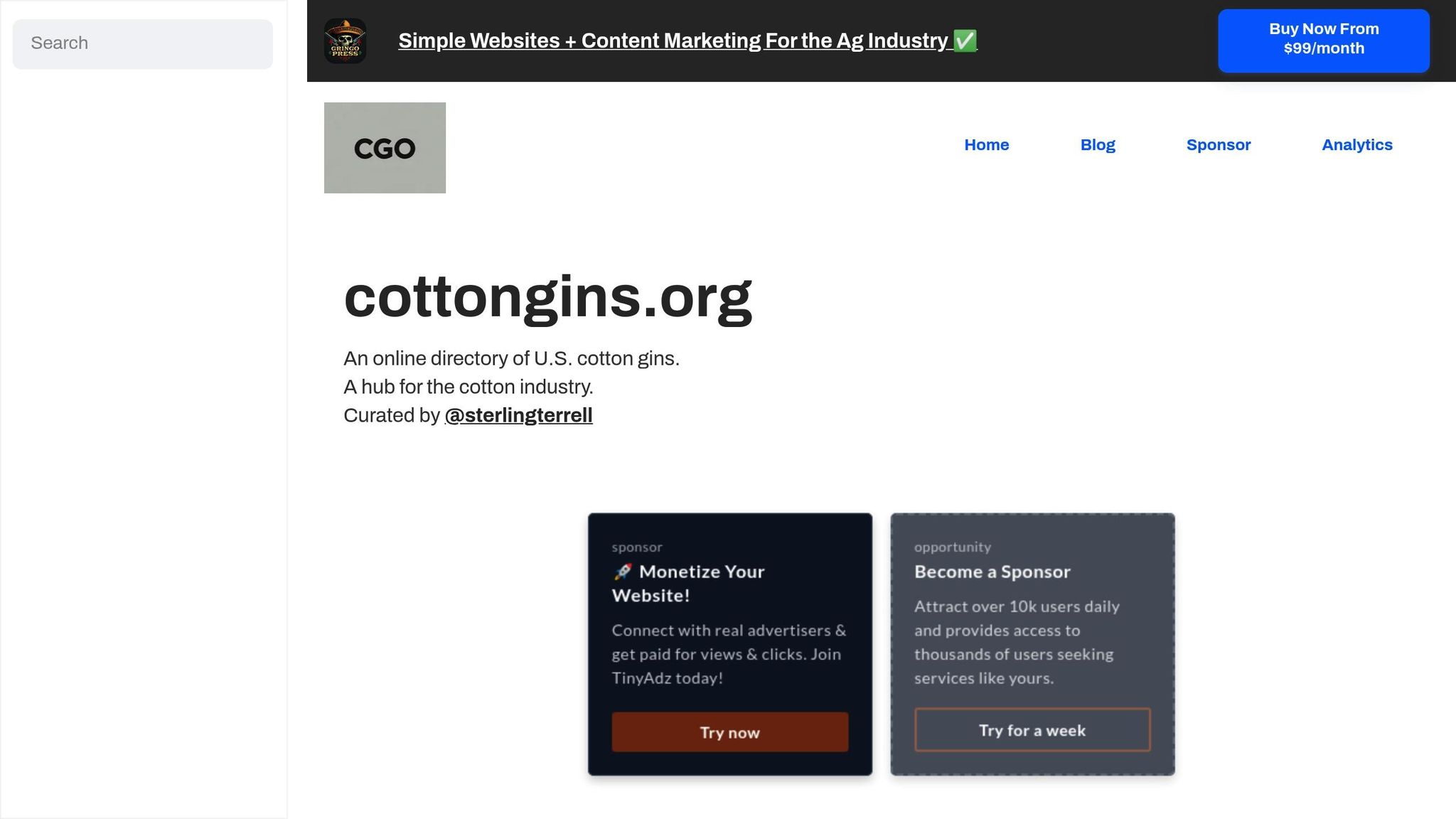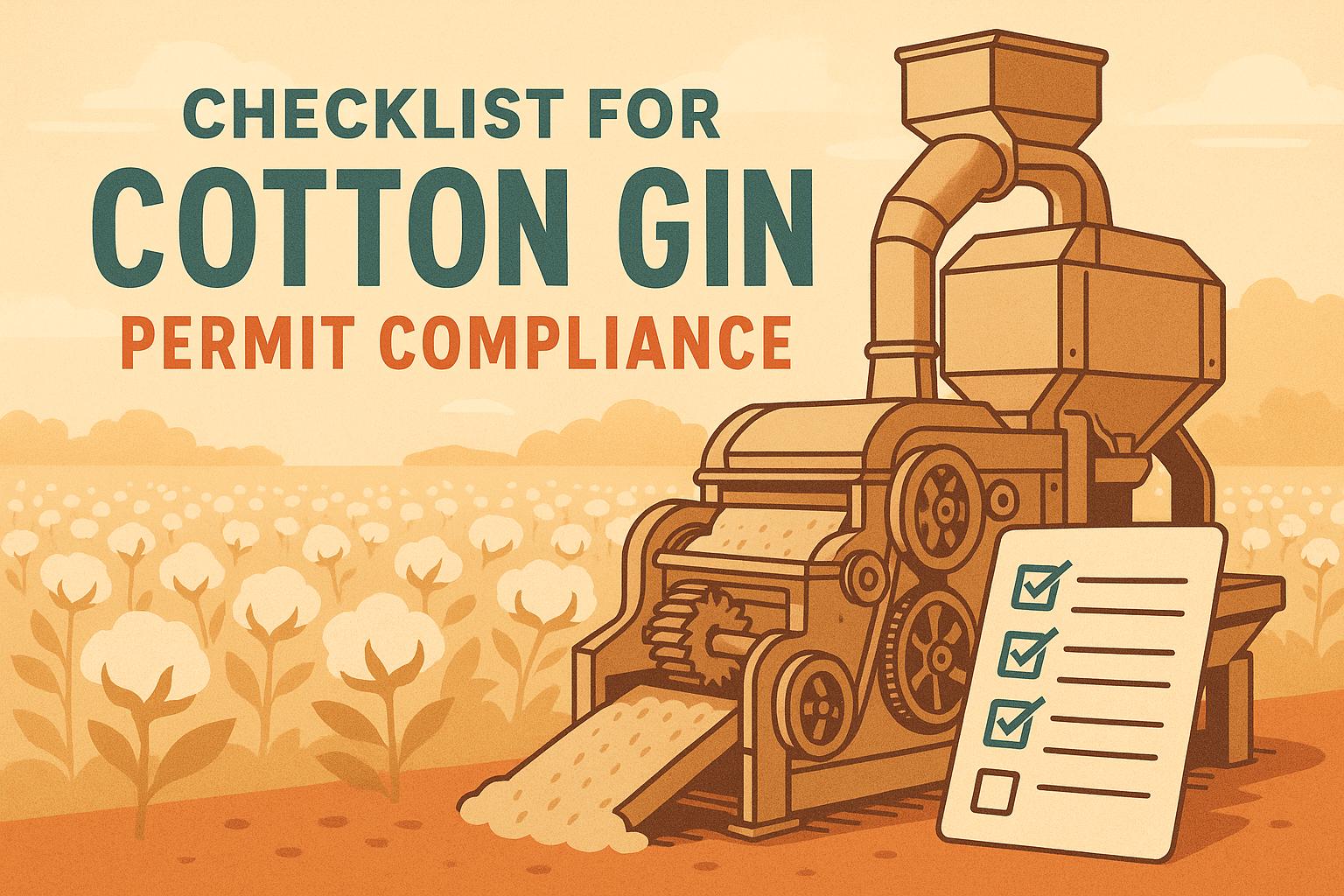Cotton prices in the U.S. are distorted due to federal subsidies and government programs, impacting both domestic and global markets. These policies lower prices artificially, disrupt competition, and misalign supply and demand signals. Recent reforms aim to address these issues, but full effects remain unclear.
Key Points:
- Main Causes: Federal subsidies (e.g., Price Loss Coverage, Marketing Assistance Loans) suppress domestic prices and disrupt market balance.
- Impacts: Lower prices for producers, uneven competition globally, and operational challenges for stakeholders.
- Recent Changes: Policy updates are stabilizing prices but require producers to adjust operations, track costs, and ensure compliance.
- Industry Tools: Platforms like cottongins.org help stakeholders stay informed and connected.
Understanding these reforms is essential for navigating the evolving cotton market.
U.S. Cotton Subsidy Programs: Core Elements
Types of Federal Support
Federal policies play a key role in shaping market dynamics for the U.S. cotton industry. These programs are designed to stabilize incomes and address market uncertainties. Key types of support include:
- Price Loss Coverage (PLC): Offers payments when market prices fall below predetermined reference levels.
- Agriculture Risk Coverage (ARC): Addresses revenue fluctuations due to price or yield changes.
- Marketing Assistance Loans: Provides short-term funding to help with operating costs.
- Crop Insurance Programs: Protects against revenue losses or poor yields.
Price Effects at Home and Abroad
These subsidies influence cotton prices both in the U.S. and globally. Domestically, they help ensure stable prices for producers, even when market conditions are unfavorable. However, increased production driven by these programs can lead to lower overall market prices. On the international stage, these supports affect trade by altering production levels and competitive dynamics.
Subsidy Payment Patterns
The distribution of subsidies varies by region and farm size. Areas with higher cotton production receive a larger share of payments, while larger farms benefit more from production-based programs. Payments are typically tied to production cycles, often issued after harvest or when market conditions demand.
These federal programs are a cornerstone of the U.S. cotton industry's efforts to manage risk and stabilize markets, even as policy changes continue to influence their structure and impact.
The Problem with Subsidies
sbb-itb-0e617ca
Recent Policy Changes and Results
Recent reforms have been introduced to address distortions in cotton pricing. However, the lack of extensive data makes it challenging to fully evaluate their impact. Many in the industry are still forming opinions on the revised support strategies, as the available information remains limited. To gain clearer insights, further research - drawing on government reports and specialized studies - will be essential in assessing how these changes influence cotton pricing and trade dynamics.
These policy updates provide an opportunity to explore their effects on those involved in the industry. For stakeholders, understanding these developments is key to navigating the updated policy landscape effectively.
Effects on Cotton Industry Members
Recent policy updates are reshaping how cotton producers and gin operators manage their day-to-day operations. These changes require adjustments to meet new subsidy requirements and maintain compliance.
Operating Under New Rules
Cotton industry members are navigating several operational changes to align with updated regulations. Key areas of focus include:
- Tracking production costs and sales: Keeping detailed records of expenses and market activity is now more important than ever.
- Regular compliance checks: Ongoing assessments ensure operations meet the latest regulatory standards.
- Budget adjustments: Adapting financial plans to reflect changes in subsidy structures is critical.
These shifts also impact how resources are managed to support efficient and compliant production.
Resource Management Methods
In areas prone to drought, producers are turning to advanced techniques like precision irrigation and soil monitoring to make the most of limited resources. Effective strategies include:
- Using precision irrigation to manage water efficiently.
- Monitoring soil health to maintain optimal growing conditions.
- Keeping a close watch on resource costs to improve budgeting.
Digital tools are also playing a growing role in helping producers streamline their processes and stay compliant.
Using cottongins.org

Platforms like cottongins.org are becoming essential for connecting industry members and sharing updates. This online directory offers tools to help producers and gin operators work more effectively.
Key benefits of cottongins.org:
- A nationwide directory of cotton gins for easy access to local facilities.
- Updates on industry news and best practices.
- Tools to identify regional processing options, reducing transportation challenges.
Conclusion: Results and Next Steps
This section highlights the key outcomes and offers guidance on what lies ahead.
Main Results
Recent policy updates have helped stabilize market prices and improved how pricing mechanisms function within the cotton industry.
Expected Policy Changes
- Updates to subsidy calculations to better align with actual production costs
- Improved systems to monitor compliance for more accurate reporting
- Modifications to price support mechanisms to reflect current market trends
Next Steps for Industry Members
Industry members should get ready for these upcoming changes by:
- Reviewing current operations to ensure compliance with existing regulations
- Adjusting resource management plans to align with the new policies
- Visiting cottongins.org for the latest industry updates and information on local processing facilities
Keeping up-to-date and adapting strategies will be critical in navigating these changes.


